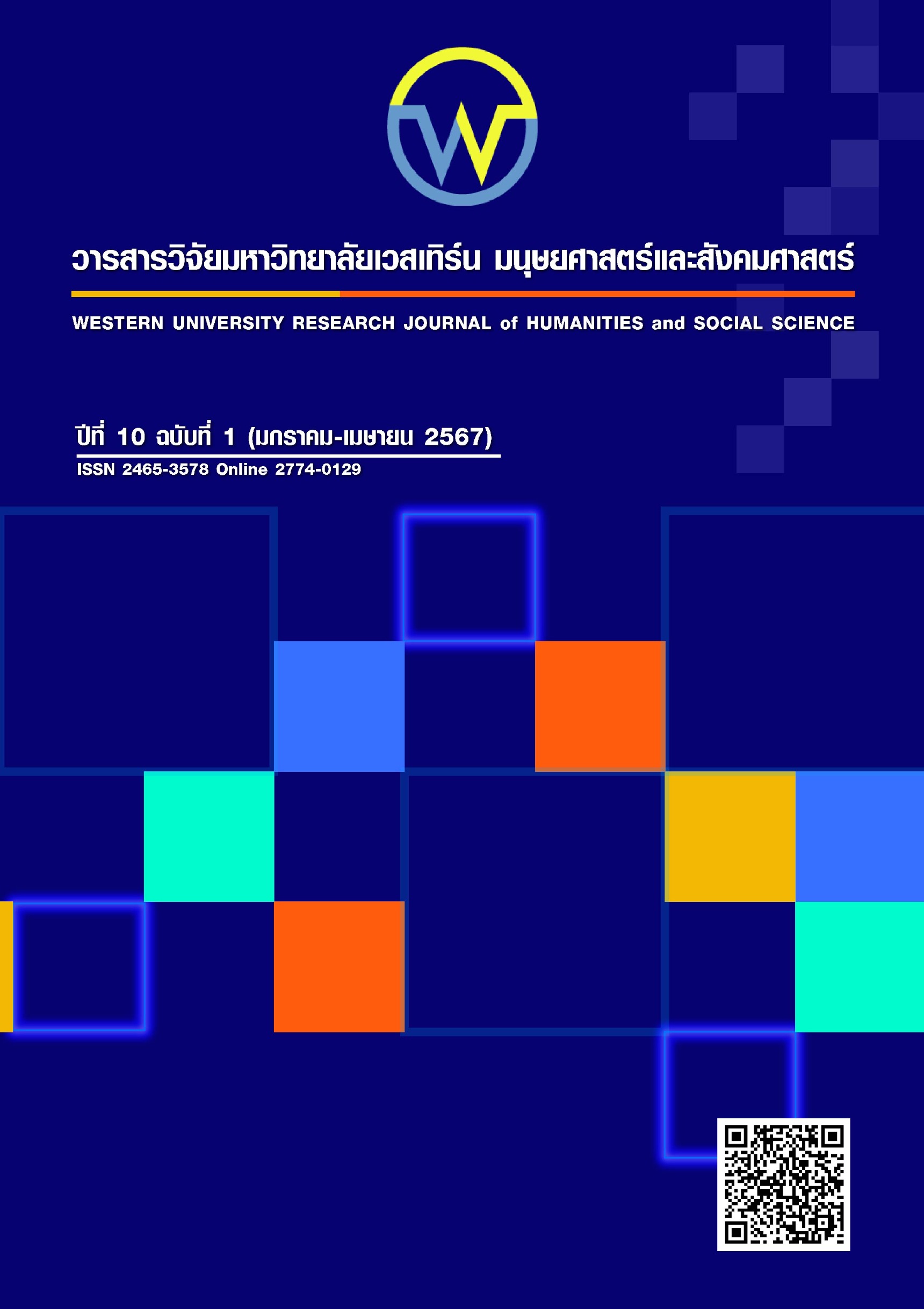ความคาดหวังของนักท่องเที่ยวด้านคุณภาพบริการและมาตรฐานความปลอดภัยด้านสุขอนามัยต่อการเลือกใช้บริการโรงแรมในจังหวัดเชียงราย
Main Article Content
บทคัดย่อ
การวิจัยนี้มีวัตถุประสงค์เพื่อ 1) ศึกษาความคาดหวังคุณภาพการบริการของนักท่องเที่ยวต่อการเลือกใช้บริการโรงแรมในจังหวัดเชียงราย และ 2) ศึกษาความคาดหวังมาตรฐานความปลอดภัยด้านสุขอนามัยของนักท่องเที่ยวต่อการเลือกใช้บริการโรงแรมในจังหวัดเชียงรายโดยใช้แบบสอบถามเก็บข้อมูลกับนักท่องเที่ยวที่เคยมาเที่ยวและใช้บริการโรงแรมในจังหวัดเชียงราย จำนวน 400 คน โดยการสุ่มตัวอย่างแบบไม่อาศัยความน่าจะเป็นด้วยวิธีการสุ่มแบบสะดวก การวิเคราะห์ข้อมูลโดยสถิติพรรณา ได้แก่ ค่าเฉลี่ยเลขคณิต และส่วนเบี่ยงเบนมาตรฐานสำหรับสถิติเชิงอนุมานเพื่อทดสอบสมมติฐานการวิจัย คือ การวิเคราะห์การถดถอยเชิงพหุ ด้วยวิธี Stepwiseผลการวิจัย พบว่า 1) ความคาดหวังด้านคุณภาพการบริการต่อการเลือกใช้บริการโรงแรมในจังหวัดเชียงราย คือ การเอาใจใส่ผู้รับบริการ ความเป็นรูปธรรมในการให้บริการ และการให้ความมั่นใจแก่ผู้รับบริการ ตามลำดับ โดยมีค่าสัมประสิทธิการตัดสินใจร้อยละ 59.70 (R2 = .597) และ 2) ความคาดหวังมาตรฐานความปลอดภัยด้านสุขอนามัยของนักท่องเที่ยวต่อการเลือกใช้บริการโรงแรมในจังหวัดเชียงรายคือ การจัดการความสะอาด การป้องกันของผู้ปฏิบัติงาน และสุขลักษณะอาคารและอุปกรณ์เครื่องใช้ ตามลำดับ โดยมีค่าสัมประสิทธิการตัดสินใจร้อยละ 54.10 (R2 = .541)
Article Details

อนุญาตภายใต้เงื่อนไข Creative Commons Attribution-NonCommercial-NoDerivatives 4.0 International License.
เอกสารอ้างอิง
กระทรวงการท่องเที่ยวและการกีฬา. (2565) สถานการณ์ท่องเที่ยวรายจังหวัดในประเทศไทยปี 2565. สืบค้นเมื่อ 20 กุมภาพันธ์ 2566, จาก https://www.mots.go.th/news/category/705.
การท่องเที่ยวแห่งประเทศไทย. (2564). มาตรฐาน SHA. สืบค้นเมื่อ 11 มกราคม 2566, จาก https://www.thailandsha.com/file/Registration_Manual_for_the_Sanitation_and_Safety_Standard_th.pdf?v=3.
การท่องเที่ยวแห่งประเทศไทย. (2564). NEO Tourism ท่องเที่ยวมิติใหม่ Insight นักท่องเที่ยวยุค Next Normal. ศูนย์พัฒนาวิชาการด้านตลาดการท่องเที่ยว-TAT Academy การท่องเที่ยวแห่งประเทศไทย.
กิตต์กวินเดชน์ วงศ์หมั่น และประกาศิต โสภณจัสกุล. (2564). แนวทางการพัฒนาคุณภาพการบริการของโรงแรมในเขตอำเภอเมือง จังหวัดตาก.วารสารการบริหารนิติบุคคลและนวัตกรรมท้องถิ่น,7(2), 211-225.
จัตตาร์พร กลางสวัสดิ์ และกันฑิมาลย์ จินดาประเสริฐ. (2565). การจัดการโรงแรมที่พักขนาดกลางแบบวิถีความปกติใหม่ (New Normal) ในเขตอำเภอเมือง จังหวัดนครพนม. วารสารวิทยาการจัดการ มหาวิทยาลัยราชภัฏอุดรธานี, 4(6), 1-15.
จิรวัฒน์ ประสมสุข ศรัณยา เลิศพุทธรักษ์ และเอกฤทธิ์ แก้วประพันธ์. (2563). การให้ความสำคัญต่อคุณภาพบริการของรีสอร์ท ระดับ 3 ดาว ในอำเภอสัตหีบ จังหวัดชลบุรี สำหรับนักท่องเที่ยว GENERATION Z. ในการประชุมวิชาการระดับนานาชาติและระดับชาติด้านบริหารธุรกิจและการบัญชี 2563 (INCBAA). หน้า 85-97.
ณัฐภัทร บัณฑิตวรากุล และเสาวลักษณ์ จิตต์น้อม. (2565). การรับรู้คุณภาพบริการที่ส่งผลต่อความภักดีของผู้ใช้บริการโรงแรม และรีสอร์ทในจังหวัดนครราชสีมา. วารสารวิทยาการจัดการวไลยอลงกรณ์ปริทัศน์, 3(3), 91-107.
นุสรา ปารมี. (2564). พฤติกรรมวิถีใหม่ของนักท่องเที่ยวที่มีต่อการท่องเที่ยวบนเกาะสีชัง ภายใต้มาตรการป้องกันและการเฝ้าระวังการระบาด COVID-19. งานนิพนธ์ปริญญารัฐประศาสนศาสตรมหาบัณฑิต วิทยาลัยการบริหารรัฐกิจ มหาวิทยาลัยบูรพา.
ปวีณา คำพุกกะ. (2556). วิจัยธุรกิจ. อุบลราชธานี: โรงพิมพ์มหาวิทยาลัยอุบลราชธานี.
พอพิมพ์ สุขเนียม. (2565). แนวทางการพัฒนากลยุทธ์การตลาดของธุรกิจโรงแรมระดับ 3 ดาว จังหวัดภูเก็ตในยุค Next Normal จากมุมมองนักท่องเที่ยว Gen Y และ Gen Z. สารนิพนธ์ ปริญญาการจัดการมหาบัณฑิต วิทยาลัยการจัดการ มหาวิทยาลัยมหิดล.
ศิริวรรณ เสรีรัตน์ และคณะ. (2546). การบริหารการตลาดยุคใหม่. กรุงเทพฯ: บริษัท ธีระฟิล์มและไซเทกซ์ จำกัด.
สุเมธ กมลศิริวัฒน์ และบุษรา โพวาทอง. (2564). กลยุทธ์การปรับตัวของผู้ประกอบการโรงแรมที่ได้รับมาตรฐาน SHA ต่อผลกระทบ COVID-19 ในเขตกรุงเทพมหานครปี พ.ศ. 2563.สาระศาสตร์, 4(3), 650-663.
Cronbach, L. J. (1970). Essentials of Psychological Testing. New York: Harper & Row.
Feli, R. (2017). Service Quality and Customer Satisfaction in Selected Banks in Rwanda. Journal of Business & Financial Affairs, 6(1),2-11.
Huanga, X., Daib, S. and Xub, H. (2020). Predicting tourists' health risk preventative behaviour and travelling satisfaction in Tibet: combining the theory of planned behaviour and health belief model. Tourism Management Perspectives, 33(2),11-10.
Parasuraman, A., Zeithaml, V. A., & Berry, L. L. (1988). SERVQUAL: A multiple-item scale for measuring consumer perceptions of service quality. Journal of marketing, 64(1), 12-40.
Rovinelli, R. J., & Hambleton, R. K. (1977). On the use of content specialists in the assessment of criterion-referenced test item validity. Dutch Journal of Educational Research, 2, 49-60.
Schiffman, L. G. & Kanuk, L. L. (2000). Consumer behavior. (5thed). Englewood Cliffs, NJ: Prentice-Hall.
Xie, Y. (2020). The Relationship among Marketing Mix, Customer Satisfaction and Customer Loyalty of Chinese Tourists to Budget Hotel of Central Bangkok. International Journal of Business and Economics, 2(1), 1–23.
Yamane, T. (1973). Statistic: An introductory analysis. (3rd ed.). New York: Harper & Row.
Zeithaml, V. A., Berry, L. L., & Parasuraman, A. P. (1996). The Behavioral Consequences of Service Quality. Journal of marketing, 60(2), 31-46.


